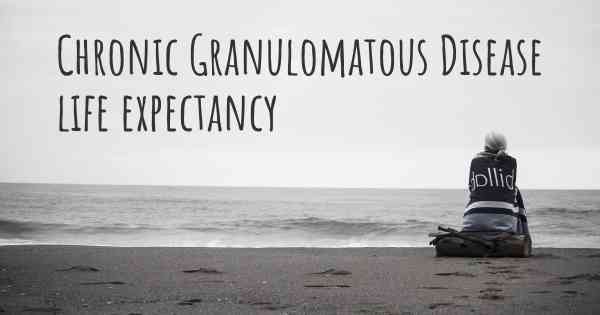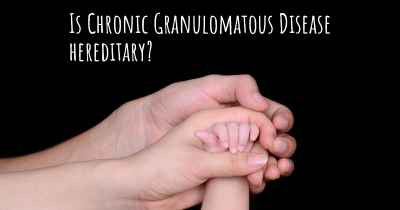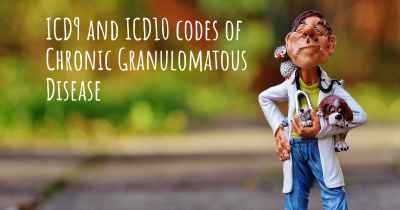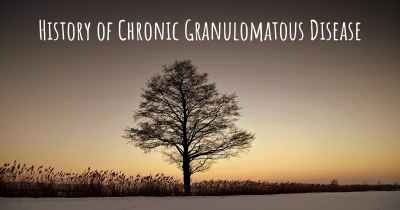What is the life expectancy of someone with Chronic Granulomatous Disease?
Life expectancy of people with Chronic Granulomatous Disease and recent progresses and researches in Chronic Granulomatous Disease

Chronic Granulomatous Disease (CGD) is a rare genetic disorder that affects the immune system's ability to fight off certain types of bacterial and fungal infections. The life expectancy of individuals with CGD can vary depending on various factors such as the severity of the disease, the age at diagnosis, and the availability of appropriate medical care. With advancements in medical treatments and management strategies, many individuals with CGD can live well into adulthood. However, it is important to note that CGD can still pose significant health challenges and complications. Early diagnosis, regular medical follow-ups, and proper treatment can greatly improve the quality of life and increase life expectancy for individuals with CGD.
Chronic Granulomatous Disease (CGD) is a rare genetic disorder that affects the immune system. It is characterized by the inability of certain white blood cells to effectively kill bacteria and fungi, leading to recurrent and severe infections.
The life expectancy of individuals with CGD can vary depending on several factors, including the specific genetic mutation causing the disease, the severity of symptoms, and the availability and effectiveness of medical interventions. It is important to note that while CGD can significantly impact life expectancy, advancements in medical care have improved outcomes for many individuals with this condition.
CGD is typically diagnosed in childhood, often after a child experiences recurrent or severe infections that do not respond well to standard treatments. The disease can manifest in various ways, including skin infections, pneumonia, abscesses, and gastrointestinal infections. These infections can be life-threatening if not properly managed.
Treatment for CGD primarily focuses on preventing and managing infections. This may involve long-term antibiotic therapy, antifungal medications, and vaccinations against specific pathogens. In some cases, individuals with CGD may require prophylactic antibiotics to prevent infections. Additionally, they may benefit from regular check-ups with a specialized immunologist to monitor their condition and adjust treatment as needed.
With appropriate medical management, individuals with CGD can lead fulfilling lives. However, it is important to acknowledge that the disease can still pose significant challenges and potential complications. The severity and frequency of infections can vary among individuals, and some may experience more severe symptoms and complications than others.
Complications associated with CGD can impact life expectancy. These complications may include chronic lung disease, liver abscesses, granuloma formation in various organs, and increased susceptibility to certain types of cancer. The risk of developing life-threatening infections remains a concern throughout an individual's life, especially if they are unable to access appropriate medical care or if their condition is not well-managed.
Advancements in medical research and treatment options have improved outcomes for individuals with CGD. Hematopoietic stem cell transplantation (HSCT) has shown promise as a potential cure for some individuals with CGD. HSCT involves replacing the defective immune system with healthy donor cells, which can restore normal immune function. However, HSCT is not suitable for all individuals with CGD and carries its own risks and complications.
It is difficult to provide a specific life expectancy range for individuals with CGD due to the variability in disease presentation and individual factors. Some individuals with milder forms of CGD may have a near-normal life expectancy, while others with more severe forms may have a reduced life expectancy. It is crucial for individuals with CGD to work closely with their healthcare team to manage their condition effectively and minimize the risk of complications.
Supportive care and a multidisciplinary approach are essential in optimizing the quality of life for individuals with CGD. This may involve regular monitoring, prompt treatment of infections, psychological support, and education on self-care and infection prevention measures. Additionally, connecting with patient support groups and organizations specializing in CGD can provide valuable resources and a sense of community for individuals and their families.
In conclusion, Chronic Granulomatous Disease is a complex condition that can significantly impact the life expectancy of affected individuals. However, with appropriate medical management, advancements in treatment options, and a comprehensive approach to care, individuals with CGD can lead fulfilling lives. It is important to remember that each person's experience with CGD is unique, and ongoing research continues to improve our understanding and management of this rare genetic disorder.
Posted Dec 24, 2017 by carrie123 3550








